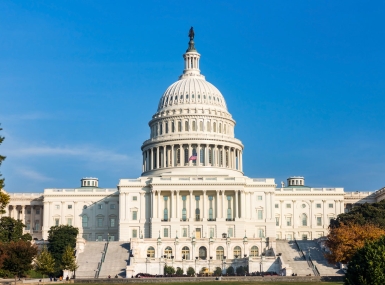The U.S. Environmental Protection Agency (EPA) retains existing air quality standards for particulate matter
Upcoming Events
Related News

Key Takeaways
On December 7, the U.S. Environmental Protection Agency (EPA) announced it will retain, without revision, the nation’s existing National Ambient Air Quality Standards (NAAQS) for particulate matter (PM). The EPA will retain the annual and 24-hour primary (health) and secondary (welfare) standards for fine particles (PM2.5)) and course particles (PM10). The decision comes after the agency reviewed and considered more than 60,000 public comments on the proposal. An EPA Fact Sheet on the decision can be viewed here.
The Clean Air Act requires EPA to set two types of National Ambient Air Quality Standards for particle pollution: primary standards – to protect public health, and secondary standards – to protect public welfare. The law requires that primary standards be “requisite to protect public health with an adequate margin of safety,” including the health of sensitive groups of people. For PM, scientific evidence suggests that people with heart or lung disease, children and older adults and nonwhite populations are at higher risk.
NAAQS can have a significant impact on county governments. Under the Clean Air Act, states and counties serve as co-regulators with the federal government and are ultimately responsible for the implementation of new and existing air quality standards. As the incoming Biden Administration considers potential future EPA regulations, this rule may be reversed, and revised air quality standards may be implemented.

Attachments
Related News

U.S. House of Representatives passes SPEED Act and other permitting reform bills
On December 18, the U.S. House of Representatives passed the SPEED Act (H.R. 4776). The SPEED Act would strengthen county involvement in decision-making and make needed commonsense reforms to the federal environmental review process.

House Natural Resources Committee advances the Endangered Species Act Amendments Act of 2025
On December 17, the House Natural Resources Committee advanced the Endangered Species Act (ESA) Amendments Act of 2025 (H.R. 1897). The version passed by the committee adopted several changes from the initial bill and would address key county concerns by improving the implementation of the ESA. The legislation now awaits a floor vote before the whole U.S. House of Representatives.

Senators introduce bipartisan UPGRADE Act to support small and rural public water systems
On December 15, Sens. Lisa Blunt Rochester (D-Del.) and Roger Wicker (R-Miss.) introduced the Unincorporated Partnerships for Grant Resources, Assistance, and Drinking Water Enhancements (UPGRADE) Act (S. 3465), a bipartisan bill that would strengthen federal support for small public water systems and helps unincorporated communities access clean and affordable water.